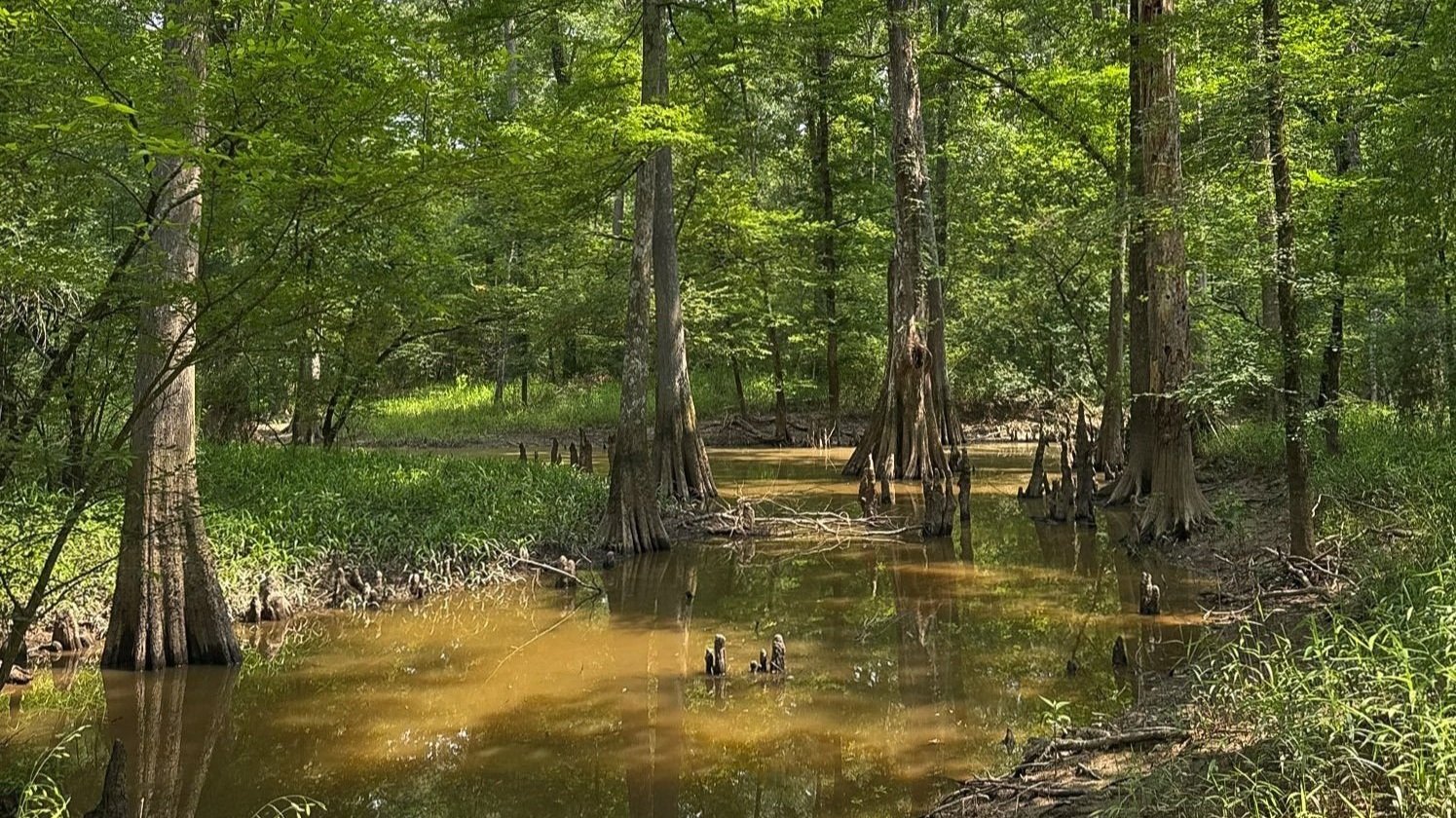163 Acres of Forested Wetlands Protected Forever
Deep in the heart of East Texas, among the tall pines and dark cypress swamps, sits a 163-acre stretch of diverse ecosystems on the eastern side of Shelby County. Sue and Chuck Orwig inherited the land from Sue’s family in the 1980s, with a vision to protect the native habitat and water quality of the many sloughs that run through the property, named Antioch Sanctuary. Now, thanks to their commitment, it is permanently protected with TLC.
Conserving Historic Landscapes
Antioch Sanctuary protects approximately 115 acres of highly functioning bottomland hardwood forests.
A bottomland hardwood ecosystem is a type of forested wetland found along rivers, floodplains, and low-lying areas. Bottomland hardwood ecosystems have been in decline across the southeastern United States, with East Texas losing an estimated 63% since early settlement began. These forests are among the most biologically diverse ecosystems in the region, supporting a wide variety of plant and animal life. However, much of this habitat has been lost due to conversion for agriculture production, urban development, and the construction of reservoirs. In addition to their ecological importance, bottomland hardwoods provide major environmental services, including controlling soil erosion, maintaining water quality, recharging groundwater, and preventing major flooding events.
Protecting Clean Water for East Texans
Flat Fork Creek, a major perennial stream, serves as the eastern boundary for Antioch Sanctuary. Towering baldcypress, oaks, maples, and hickories hold the soil firm within the Flat Fork Creek floodplain while shading the water of the creek and the many sloughs that meander through the property. This improves water quality at the property level, but also further downstream where Flat Fork Creek meets Tenaha Bayou, and then is emptied into Toledo Bend Reservoir. Toledo Bend provides municipal water to small communities surrounding the lake in both Texas and Louisiana. Protecting the watersheds that empty into the reservoir not only benefit the many species of wildlife that utilize it daily, but also greatly impacts the humans that use it for recreation and water supply.
Providing Sanctuary for Wildlife
The uplands of Antioch Sanctuary are covered in a mix of pine and hardwood trees, creating a diverse forest where both types grow side by side. These mixed woodlands, along with the hardwood flats, which are a more swampy forest, serve as home to a wide variety of birds, fish, amphibians, reptiles, and mammals.
As an avid birder, Sue Orwig has kept a life list of bird species observed within their property since the early 1980s. Among her list include migratory greater scaup, Wilson’s warbler, wood stork, Brewer’s blackbird, red-headed woodpecker, prothonotary warbler, cerulean warbler, sandhill crane, and Kentucky warbler, many of which are listed on Texas Parks and Wildlife’s State Wildlife Action Plan as Species of Greatest Conservation Need. State protected timber rattlesnakes have been observed in the higher forested areas dominated by pine trees. The shell of the threatened alligator snapping turtle was recovered from the banks of Flat Fork Creek and river otters have been observed playing in the deep flowing waters. Wood duck commonly use the sloughs and streams with their dead or dying hardwood trees, referred to as snags, that are necessary for nesting.
Conservation Success
Antioch Sanctuary will now forever protect the cultural heritage, water resources, and native habitat for the benefit of all future Texans. Its close proximity to national forests and state-owned wildlife management areas increases the connectivity of protected lands within the region.
Texas Land Conservancy is forever grateful for the dedication of Sue and Chuck Orwig to conserve our East Texas resources for generations to come.
We also want to say a big thank you to one of our most trusted conservation attorneys, Tancig Law, for representing the landowners and negotiating the conservation easement with TLC.
Help protect more properties like this across the state!
Texas Land Conservancy could not do this important conservation work without our members, partners, and supporters. With your support, we can work with more landowners and protect more land across the state from the negative effects of land fragmentation and poorly-planned development.





